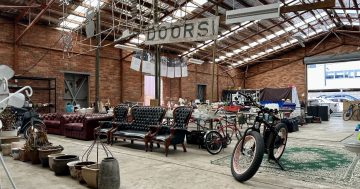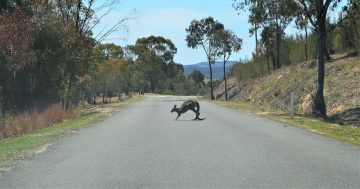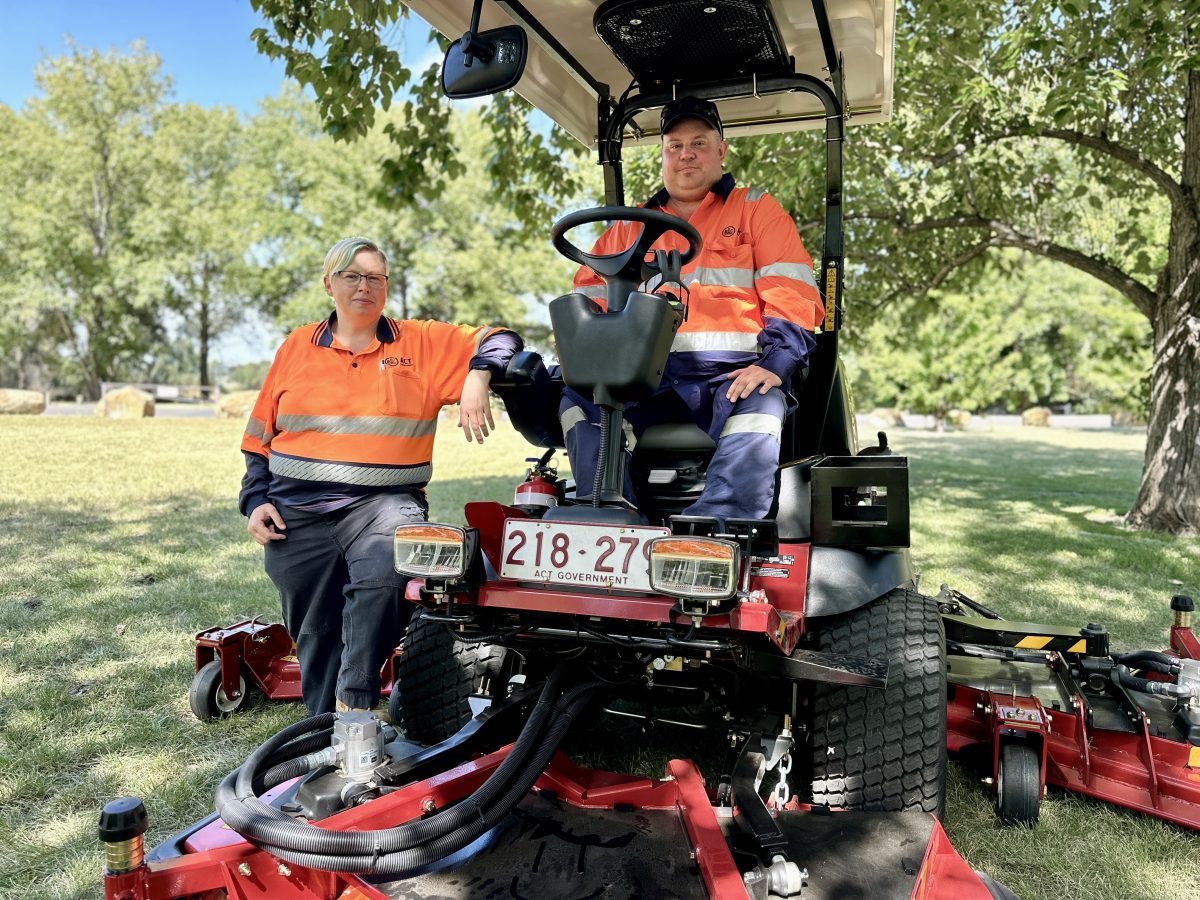
Mowing coordinator Jody Friend and general service officer Adam Kaminski have words for Canberra’s motorists. Photo: James Coleman.
As the ACT’s official mowing season draws to a close on 31 March, and the relentless rounds of Canberra’s grassy spaces slow down in favour of maintenance over the colder months, the lawn mowers have a message for local motorists.
“We’re getting a lot more motorists slowing down; we’re getting a lot more waves and thank yous – it’s really good,” Adam Kaminski says.
“I think they’re seeing our hard work since the grass was long from the rain, and we’re out there doing a lot of overtime, and they really appreciate it at the moment.”
It reached the point that Adam posted a “shout-out” to the Canberra Notice Board Group on Facebook in late February.
“This morning, I started mowing in the middle of Hindmarsh Drive,” it read.
“A guy in a truck slowed right down (no traffic behind him) and was yelling out to get my attention … I heard him say, ‘Great job, mate!’ and [he] gave me big thumbs up. So a big shout out to you, big fella! Appreciated it very much.”
Adam has been mowing lawns his whole life and wouldn’t have it any other way.
“I love mowing. Mowing is my life. The smell, the before-and-after look – I just love it.”
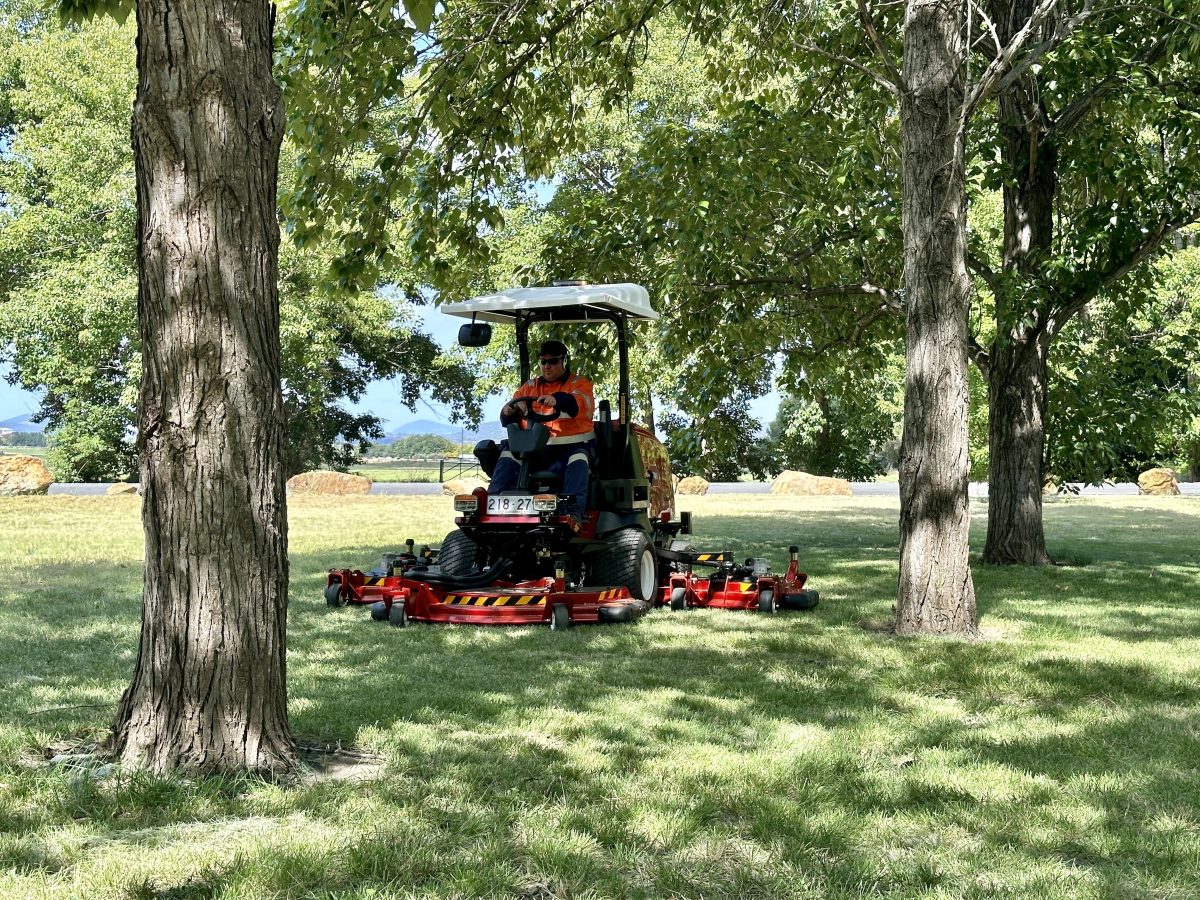
Adam Kaminski is on the ‘rapid response team’, which was formed last year to cope with extra grass growth. Photo: James Coleman.
By age 8, his dad had taught him how to use a push mower, and by 13 he ran his own little business, mowing neighbours’ lawns for cash. Between then and when he joined the ACT Government’s lawn mower crew six years ago, he honed his skills in landscaping and gardening around Canberra.
He’s now in the ‘rapid response team’, assigned to assist the normal mowing rounds in areas of extra growth.
Coordinator Jody Friend says this was formed about 12 months ago in response to the surge in growth.
“It is a real asset at this time … We’ve been able to spread them around when the main depot is falling behind,” she says.
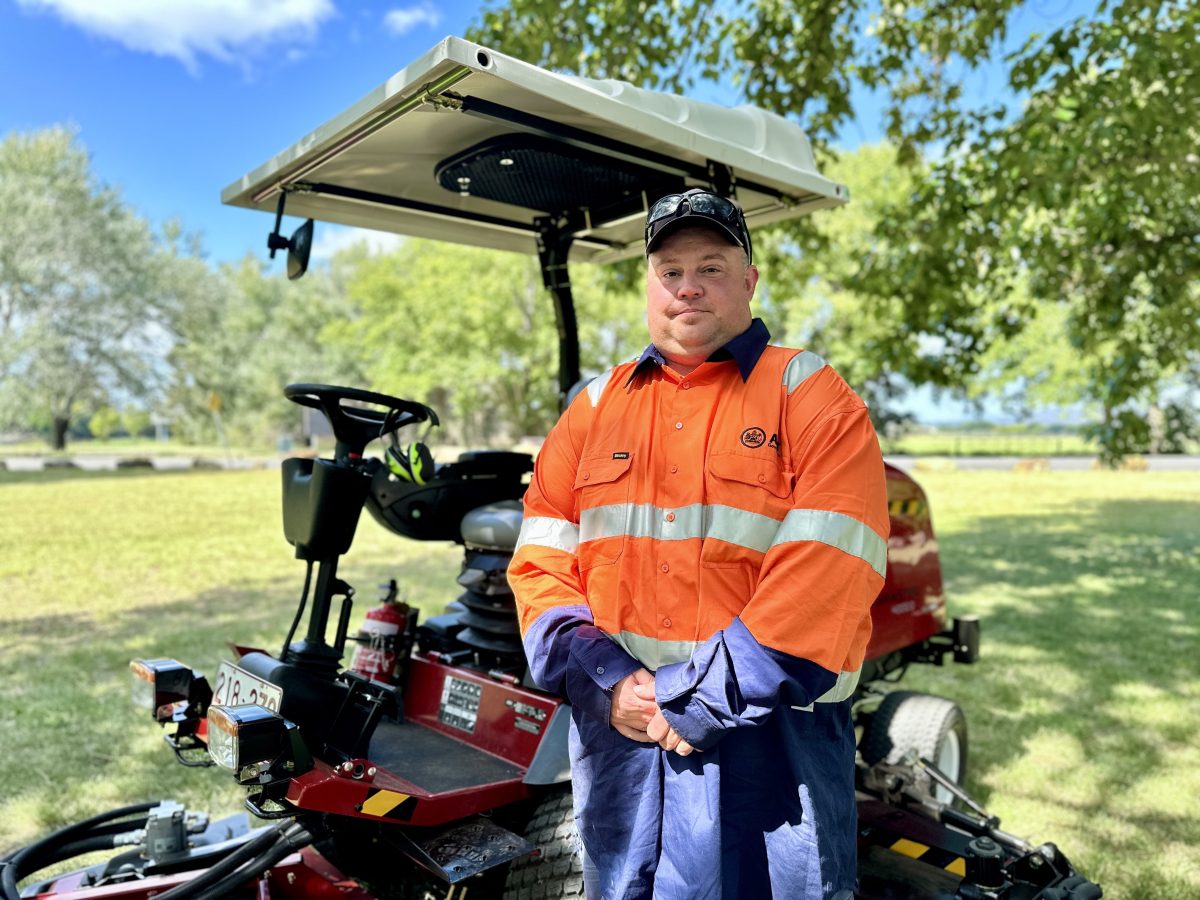
Adam will spend winter looking forward to spring and when he can get back on the mower. Photo: James Coleman.
The ACT’s annual mowing program normally runs from September to March. Nature strips and green spaces in the suburbs are mown every 20 days and arterial roads every 25 available days (all weather permitting).
There are 10 mowing teams, plus Adam’s and three contractors. The fleet has 82 machines, including four electric machines on trial for two years “to see if they can handle our extreme conditions.”
“The [electric mowers] have been a bit hit and miss,” Jody says.
“They’re great for the shorter grass, and when we’re on target and we don’t have surges of growth. When we do have that extreme growth, they really do struggle.”
Jody reiterates the need for motorists to slow down around mowers, regardless of size or type.
“Being on the major arterial roads – generally 70 to 80 km or above – is very high risk and dangerous. The guys are on the ground, focussing on mowing the grass, and don’t need to be constantly looking backwards.”
For every kind word or thumbs-up, she says there are cases when mowers are pelted with drinks and rubbish from passers-by, too.
“We’ve had incidents where objects have been thrown from windows, all because [the motorists] had to slow down a little bit.”
Adam adds, “When I leave home, I want to be able to go back home, and that comes down to the motorist”.
During the season, his day starts at 6 am with a check of the machines and can finish as late as 6 pm, depending on the growth.
“I get to know everywhere,” he says.
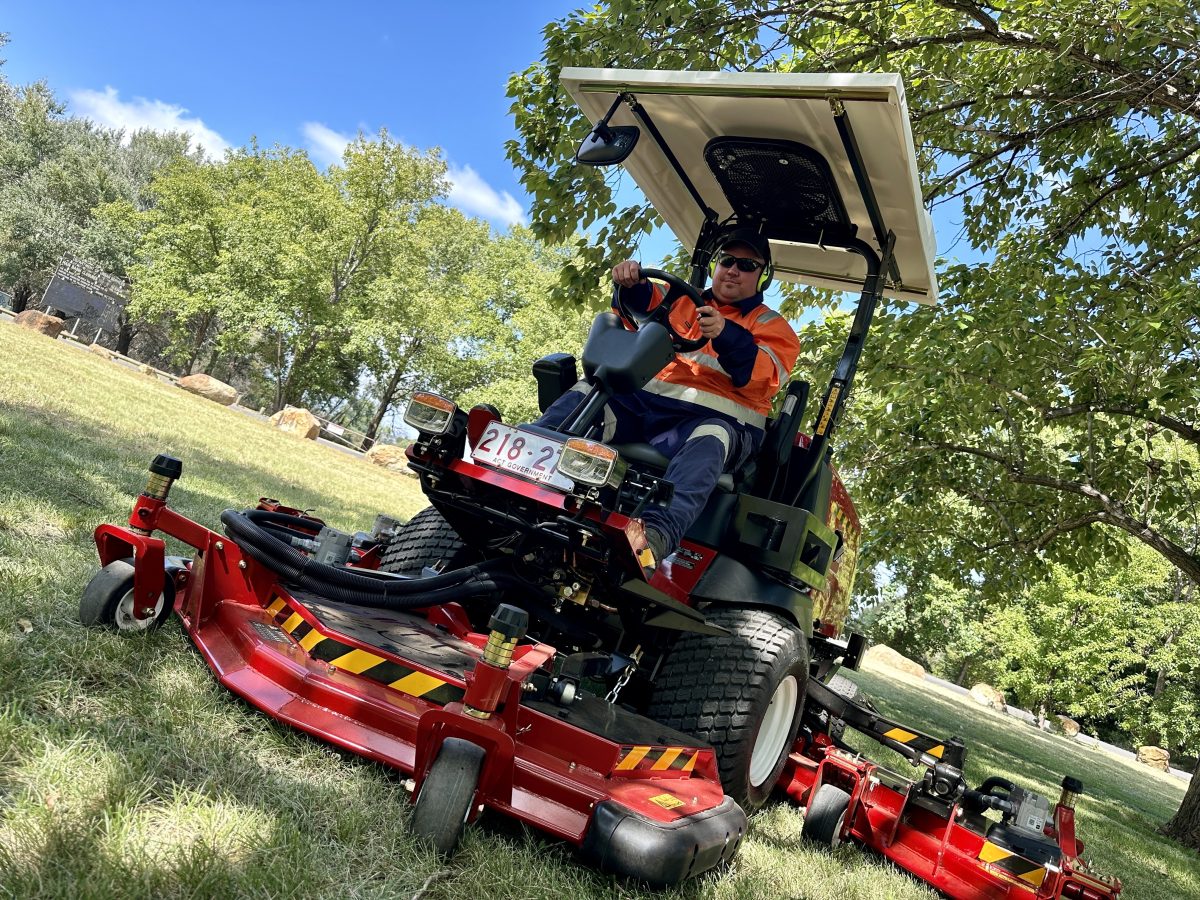
During the mowing season, the crews start work at 6 am and often finish around 6 pm. Photo: James Coleman.
His favourite spot is where we’ve agreed to meet today, by the Molonglo River Boat Ramp, upstream of Lake Burley Griffin near Monaro Highway and Pialligo Avenue intersection.
“I also love Northbourne Avenue.”
Over the past four years, the crews have been “mowing pretty much 12 months of the year,” but this year, it’s expected that many will be able to be redeployed to a more relaxed few months of brush cutting, garden bed maintenance and weed spraying.
Adam, for one, can’t wait to get back on the mower again.
“I’ll be praying for rain.”
Original Article published by James Coleman on Riotact.



